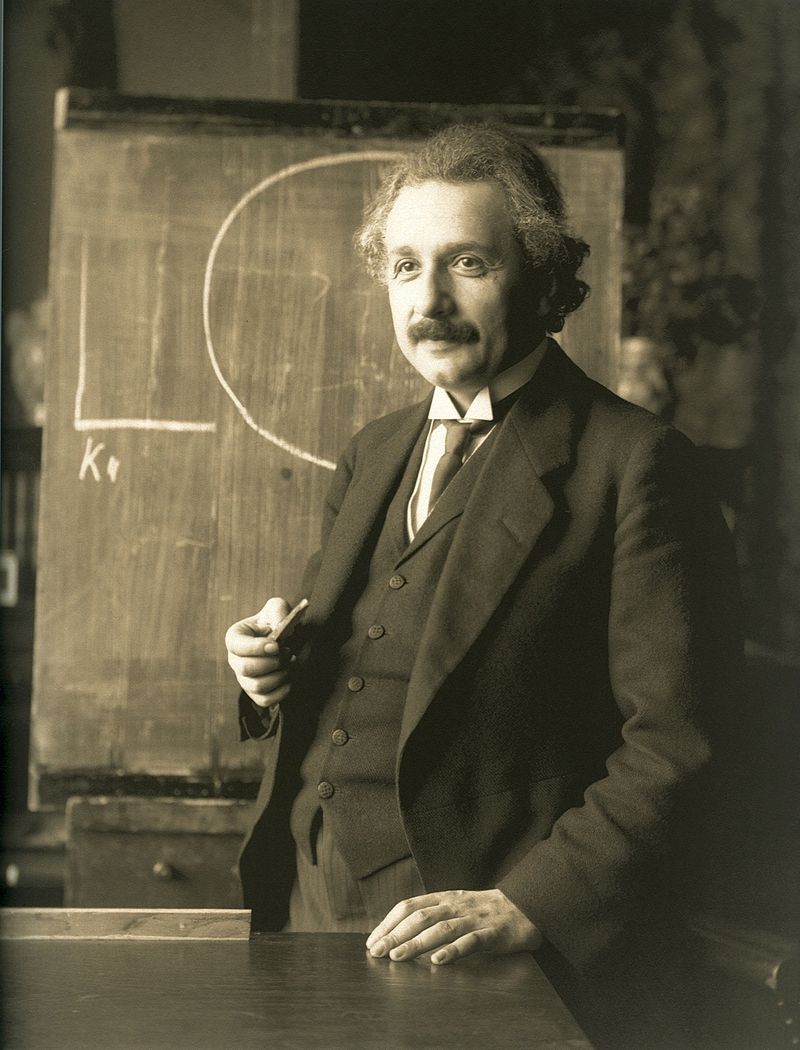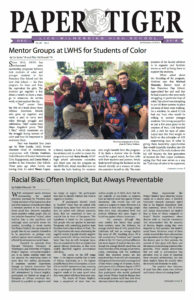
Beautiful, imaginative, timeless.
In Einstein’s Dreams, Alan Lightman weaves the real and the abstract while exploring both human nature and the phenomenon of time. Between fictional interludes describing an exhausted Einstein and his friend, Michele Besso, Lightman invents and explores the dreams of the absorbed Albert Einstein as he develops his theory of relativity.
With the exception of the interludes, Lightman invents a different dream of Einstein’s in each chapter. In each dream, time takes a different form.
In one, for example, time holds three dimensions, just like space. For every moment, every decision, there are three possible timelines that stem from that second. From each of these three possible timelines, three more arise the next instance a decision is made. Lightman describes that whether the decision is to buy a coat, or to leave one’s wife, three worlds with the same people, but different timelines, arise from each decision. In time, Lightman supposes that there would be an infinite amount of worlds and timelines as more and more decisions occur.
Like most of Einstein’s dreams that Lightman paints in the novel, this world of time is similar to a real theory; the quantum multiverse. In this debated but popularized theory, there are an infinite amount of worlds happening at the same time, with new ones being created every time a divergence in events, like a decision, takes place. Like in all worlds of time Einstein dreams, this world opens a window into theoretical physics.
Equally importantly, however, Lightman also explores human nature and ethics as it relates to his world of time. In this world where time stems in three dimensions, Lightman describes the different types of people and philosophies that could arise. He supposes that some will chose not to care about any of their decisions. In a world where people will experience every option from every decision, regardless of what they do, why should they think too hard about their choices? Every option will happen anyways. On the other side of things, Lightman suggests that some people will swear by the importance of each decision. In a world where every possible scenario will occur, these people suppose that without making choices, their life will be purposeless.
Exploring both human nature and theoretical physics in each world, Lightman’s chapters are intellectually intriguing on a variety of levels.
To further connect Einstein’s dreams to the theory of relativity he was developing, Lightman also imagines a few worlds that have exaggerated properties from Einstein’s theories. For example, Einstein’s theory of general relativity proposes that time appears to pass slower closer to gravitational pull. Examine clocks. Clocks closer to the center of the Earth will tick imperceptibly slower than those further from Earth’s core. In one of Einstein’s dreams, Lightman created an exaggerated, and opposite version of this effect in the dream world.
In the world, for every additional foot someone is from the center of the Earth, time will pass a small, but discernable, amount slower than it would closer to the Earth. As in all of his worlds, Lightman explores human nature in this imagination of time. He supposes that people will strive desperately to live as high up as possible, in order to live “longer.” People’s houses rest on stilts and competition grows as people strive to live higher up than their neighbors. Kids are taught to shun the other children who live lower than them, as they are, quite literally, below them. Yet the world Lightman describes is full of fear and restlessness. When people are forced to come down from their mountains and stilt-houses to attend to business on the ground, they rush around as fast as possible, never enjoying the world as they hurry back up to higher ground. Lightman argues that the few people who find happiness are those who chose not to worry about whether their neighbors live higher up than them. They are content to live a few minutes shorter than those around them, and go about their lives happily at sea level, as the world grows higher and higher above their heads.
Many more dream worlds in the novel portray important concepts that appear in Einstein’s theory. In one, time moves slower for people who are moving very quickly. As a result, everyone rushes around and never pauses to think, knowing that slowing down could affect their lifespans (if only by a little). People’s houses are even on wheels, always moving.
In Einstein’s theory of relativity, he supposes a concept called velocity time dilation. According to this concept, like in Lightman’s dream world, time moves slower relatively if you are moving faster. In space, astronauts moving miles per second age imperceptibly slower than those who remain stationary on Earth. Lightman exaggerates this effect greatly in his world, but he still connects the imagined worlds that Einstein dreams, and the theory he creates, through this world of velocity time dilation.
Beyond these examples, Lightman creates a universe of other imaginative worlds. In one, time repeats itself over and over so that people are forced to live the same day again and again. In another, the idea of the future is imperceptible to people, and they thus act without any recognition of future consequences. In his final world, time is a nightingale that people are left chasing for all of their lives, knowing that if they could only capture time they could pause for a moment to rest.
In each world, Lightman explores both real theories of time and more abstract ones. And in each, Lightman imagines how people treat life differently in the world of time they are given. For pupils of physics, science-fiction lovers, or curious students of human nature, Einstein’s Dreams takes a poetic and in-depth look into the world of time.





